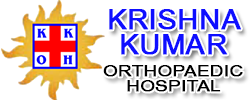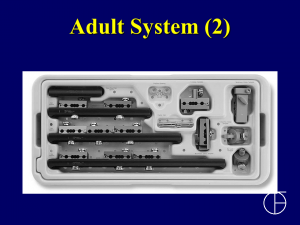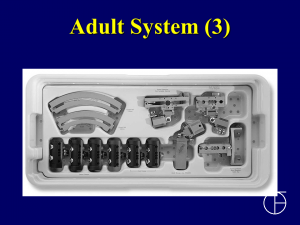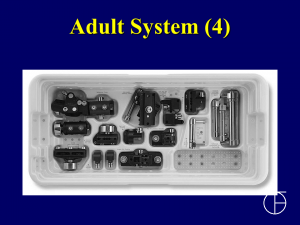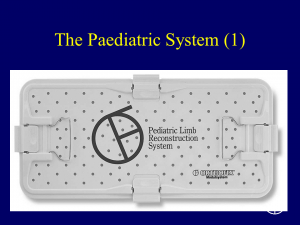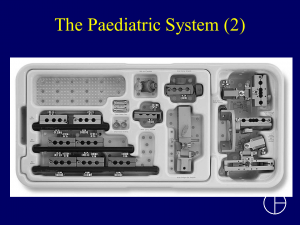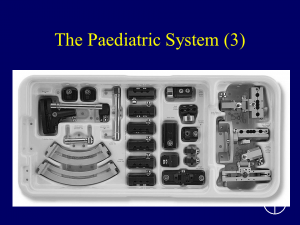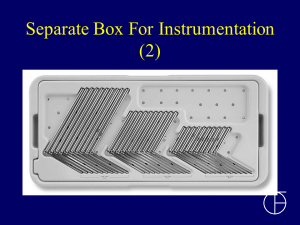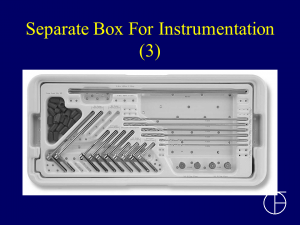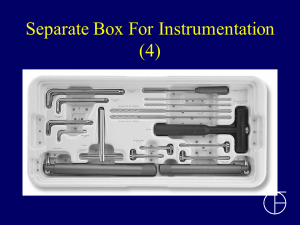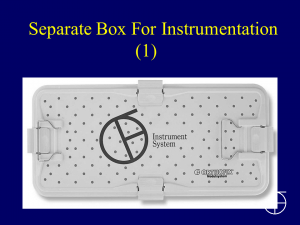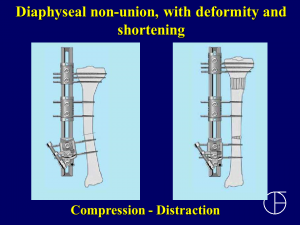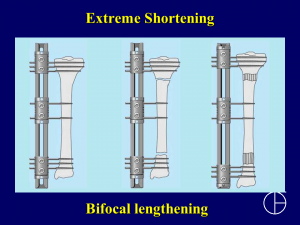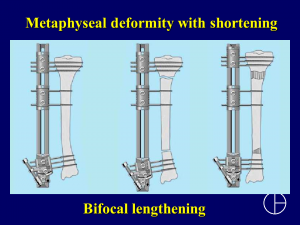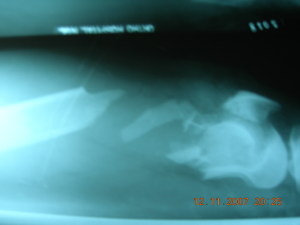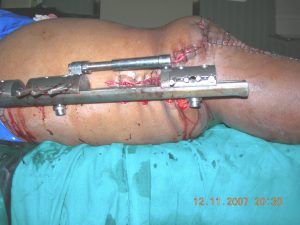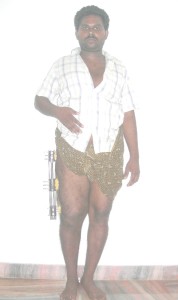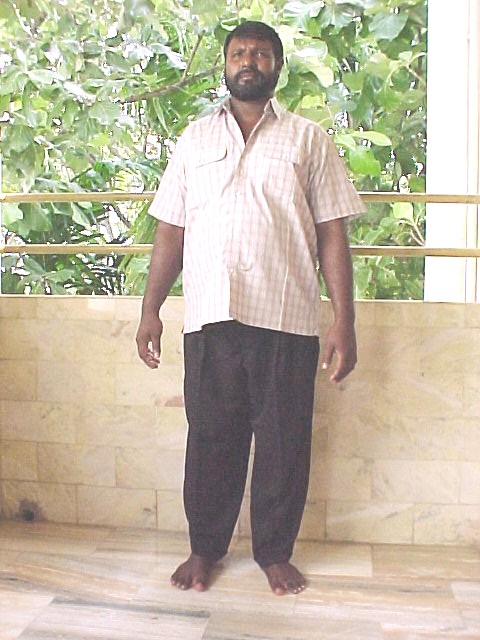An Introduction to Limb Reconstruction and the Orthofix Limb Reconstruction System
Limb Reconstruction:
- Limb Reconstruction is the discipline which attempts to correct anatomy and restore function in a deformed or deficient limb.
- The problem may be of congenital, traumatic, degenerative, metabolic or neoplastic origin.
It may present as shortening, angular deformity, angular deformity with shortening, or bone and/or soft tissue loss. - Today, limb reconstruction, which often involves multilevel surgery, is a rational alternative to amputation in many cases.
Orthofix and Limb Reconstruction:
The Orthofix Limb Reconstruction System
(The ‘LRS’) with its modular attachments is
specifically designed to enable the surgeon to
perform single or multilevel surgery to
reconstruct a damaged limb.
This module will give an overview of the device and its uses.
This shows that the LRS is a monolateral rail system along which clamps can slide. The straight clamps illustrated are detachable and can be replaced where indicated, by other clamps and templates which allow complex corrections to be made.
This shows the box for the Adult LRS system.
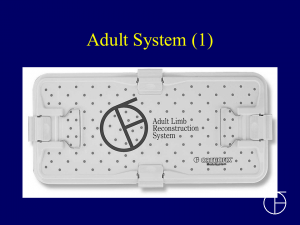
Adult System2 contains the three standard sizes of rail and the standard clamp templates.
Adult System3 includes the definitive standard series of clamps and the Acute Correction Templates.
The Acute Correction Templates allow accurate correction of an angular or rotational deformity to be made immediately, through a fresh osteotomy, and comprise:
1. A Straight Clamp Template
2. A T-Clamp Template
3. An OF-Garches T-Clamp Template
4. A Rotational Correction Template
Adult System4 houses clamps for gradual correction. These are:
1. The Micrometric Swivelling Clamp
2. The Multiplanar Clamp
3. The OF-Garches T-Clamp (Paediatric tray only; there is no room for it in the adult tray).
This shows the box for the Paediatric LRS system.
Separate Box For Instrumentation
Tray contains the screw guides. Drill guides and drill bits. Cannulated drill bits, trocar, hammer, T-wrench, Allen wrenches and torque wrenches.
Main indications for use of the LRS
- Lengthening of short limbs
- Correction of deformity (angular and/or rotational)
- Correction of deformity plus lengthening, or of deformity occurring during lengthening
- Treatment of bone loss, with or without soft tissue loss
Single level surgery requires the use of two clamps only, whereas multilevel surgery needs at least three.
To lengthen this short tibia a metaphyseal osteotomy has been made between the clamps (middle picture), and when callus begins to form, the distal clamp is moved down the rail, stretching the callus and lengthening the bone by the required amount.
The following are diagrammatic representations of the ways in which the LRS can be used to treat these problems
Application Technique
The basic Application Technique for the LRS is now described, using as an example a three clamp assembly for bone transport in a femur with a medium-sized distal defect.
The straight clamp templates have been assembled on the rail.
In the proximal clamp, screw seats 1, 2 and 4 (numbered from the proposed osteotomy site), should be used.
Positions 1 and 5 are used in the middle and distal clamps.
Orthofix hydroxyapatite coated (OsteTite) bone screws are always to be recommended for limb reconstruction procedures.
